Tom Yum Goong, Thai Hot and Sour Soup
Tom Yum Goong is Thai style hot and sour prawn soup. This recipe will guide you to make a very authentic version made from scratch.
There are many different kinds of soups in Thailand. But I always come back for this hot and sour prawn soup called, “Tom Yum Goong“, as my favorite. Just thinking of this soup alone makes my mouth salivating.
Tom Yum Goong is perhaps the most well known dish of Thailand. With its sensationalizing flavor contrast and aroma, it surely awakes your taste bud on your tongue.
I learned how to make this appetizing soup from my Thai friend many years ago. Ever since then, it became my repertoire soup when I need an Asian comfort any time of the year.
I think Tom Yum Goong can be a great remedy for cold and flu.
It can clear out your sinus like a plumber opening up the old clogged kitchen sink pipe.
The degree of spiciness and the sourness can be achieved by your liking. Some add cow milk at the end to neutralize the spiciness. Some add coconut milk to make it creamy — then it sort of becomes a different soup called “Tom Khaa”. You can use chicken if you are not fond of prawns but you gotta allow prawns to be the highlight of this soup.
How to make Thai Hot and Sour Soup (Tom Yum Goong)
- A good soup starts with a good base; in this case, prawns!
- Remove the head and the shell from the prawn but leave the tail intact. Slit along the back of prawn and you will discover the vein. Take that gunk out.
- Save their heads and shells. DO NOT throw away! You need them from their head to toe to get the most flavorful soup.
- Smack one lemongrass with your manly fist or back of your knife.
- Saute the prawn heads and shells with the lemongrass in hot oil for 3 minutes.
- Add chicken stock and two slices of galangal. What is galangal? It looks like ginger but it is not the same. You can substitute with ginger if you can’t find it, but do your best to search your town for this. Makes all the difference.
- Drain the stock and reserve about 3 cups. Discard the rest.
- Smack these tiny Thai chili, aka the killer!
- Get your mushroom ready. Straw mushroom is the traditional choice, but oyster or wild enoki mushrooms will do fine. Slice the other lemongrass thinly.
- Now the kaffir lime leaves. Pull off the stem on the back of the leaf. It will cast the most aromatic smell right under your nose.
- Throw lemongrass, chilies, kaffir lime leaves in the stock and let it boil.
- Add shrimp. mushroom, tomato into the stock and let it simmer.
- Slice tomato into wedges and add to the soup.
- Season the soup with Thai fish sauce.
- Add the lime juice and taste. Adjust the amount of lime juice according to your taste.
- Lastly throw some cilantro (or coriander leaves depends on whom you talk to) at the end.
Serve Tom Yum Goong with a little bit of steamed jasmin rice or alone as an appetizer.
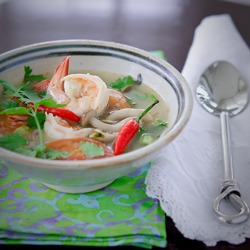
Tom Yum Goong (Authentic Thai Hot and Sour Prawn Soup)
Ingredients
- 7oz whole prawn or large shrimp
- 2 stalks lemongrass, pale yellow part only
- 1 tbsp oil
- 4 cups chicken stock
- 3 kaffir lime leaves
- 4-7 Thai bird eye's chili, smashed
- 2 pieces thinly sliced galangal
- 1 handful straw mushroom or oyster mushroom
- 2 shallots, sliced
- 1 tomato, cut into wedges
- 2-3 tsp Thai fish sauce
- 1-2 lime, juiced
- 4 tbsp cilantro, chopped
Instructions
- Clean the shrimp by removing heads and shells but tails intact, reserve the heads and shells. Discard the vein. Set aside.
- Smack one of lemongrass with back of your knife to release its fragrance.
- To make the prawn stock; heat oil in a soup pot over medium high heat, add the reserved shrimp heads and shells, and one smashed lemongrass. Saute together for 3 minutes. Add chicken stock and galangal, let it boil first and then simmer over low heat for 20 minutes. Strain the stock and discard the shrimp heads & shells, lemongrass, and galangal pieces.
- Slice the remaining lemongrass thinly. Remove the vein on the back of kaffir lime leaves.
- Pour the stock back to the pot over medium high heat, add the sliced lemongrass, chili, kaffir lime leaves, and shallot, and bring them to boil.
- Add shrimp, mushroom, and tomato, and continue to cook. Season with 2 teaspoon of fish sauce first. Remove the pot from heat and add the lime juice. Adjust the amount of fish sauce and lime juice according to your taste.

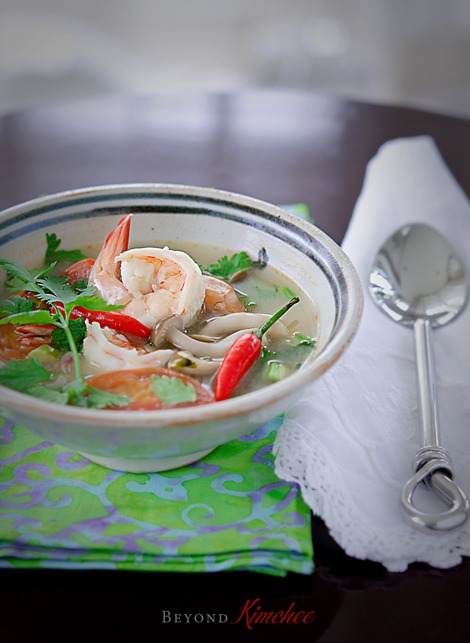
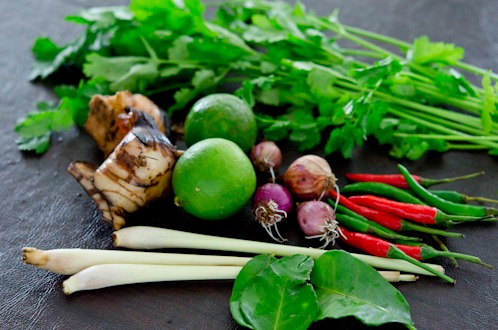
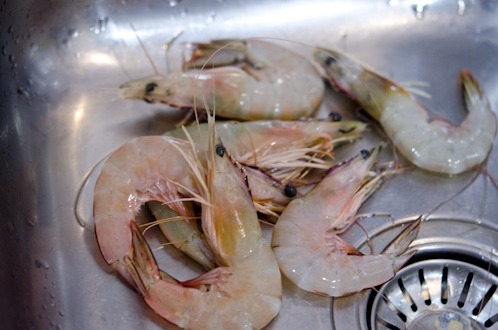
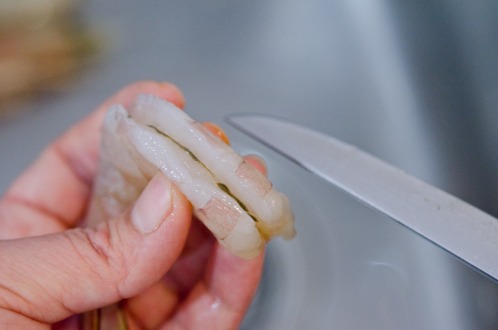


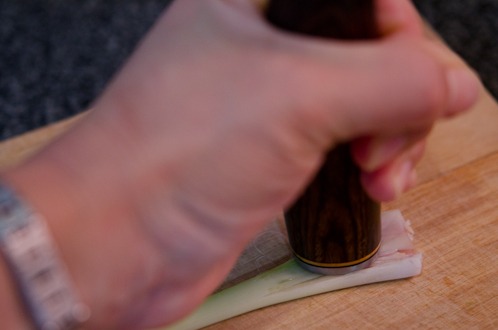
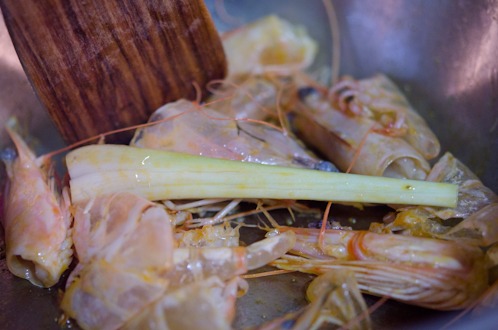
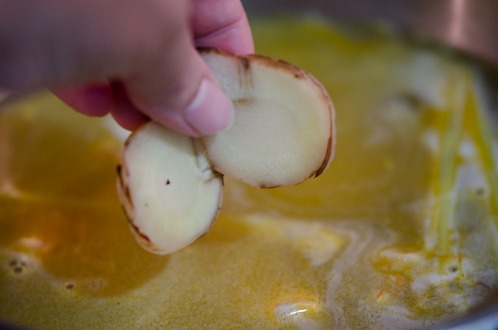
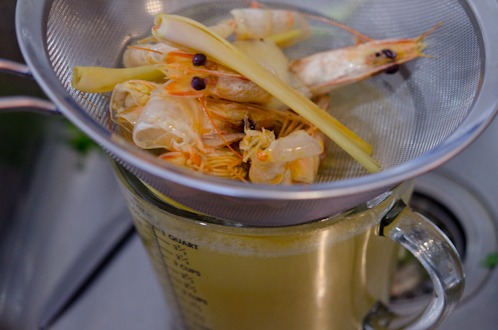
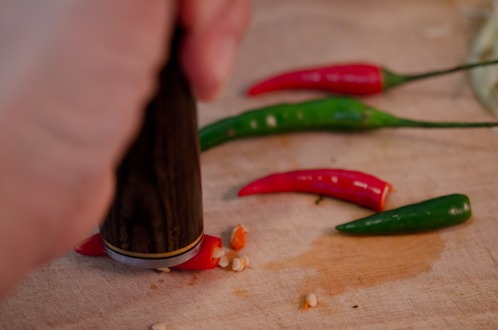
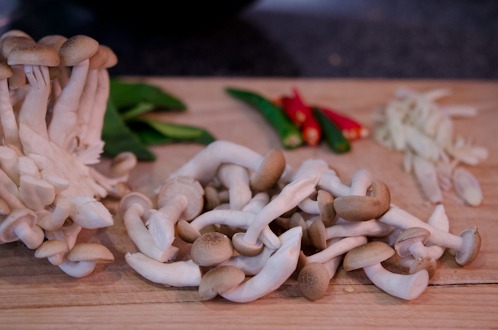
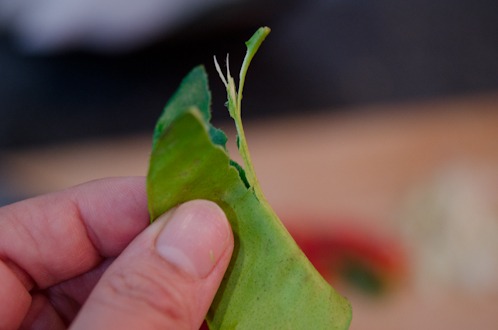
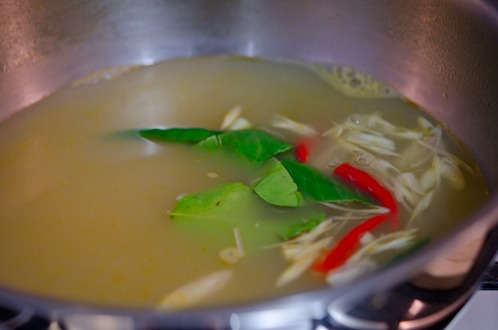

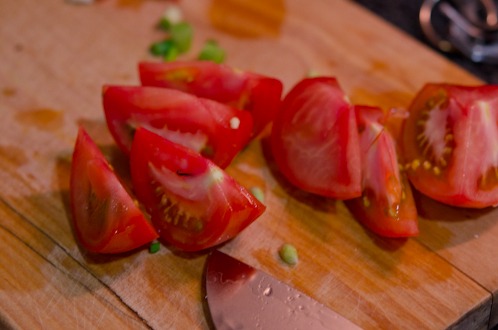
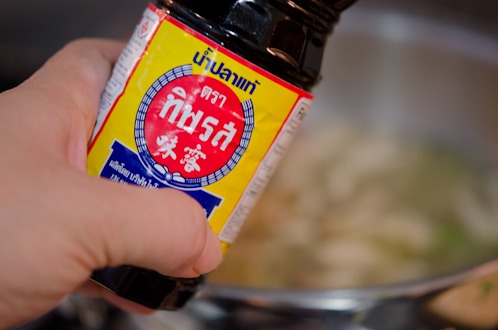
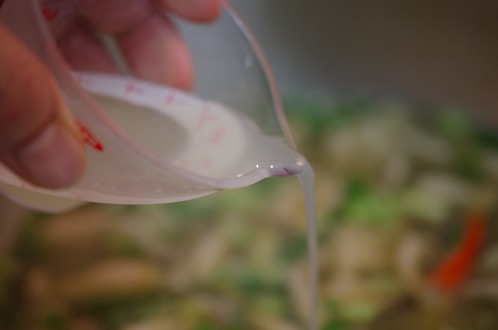
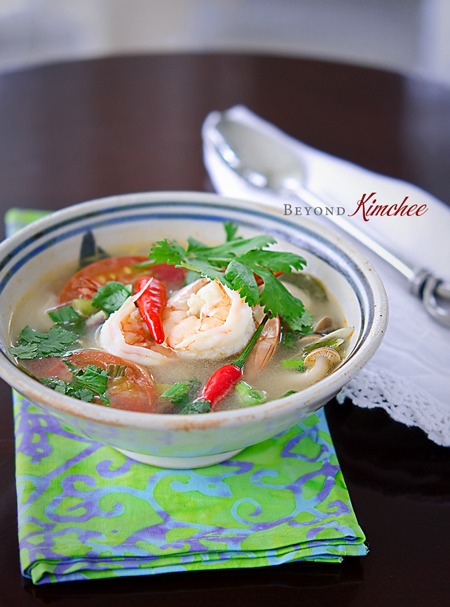

hi, would like to check for how many pax would the above recipe serves? Am looking to organise a dinner and love serving your soup at the dinner
It will serve about 4 as an appetizer. Hope you enjoy! Thanks.
What can I say
I’m making this again tonight ( Because I’m Happy 🙂 )
Hi I love Thai food I must try.. going way back the dogs and cats would have climbed up and into the straw roofs of the houses to keep warm but when the rain came some times they would slide down and off the roofs, if you happened to be looking out your window you would see it would be raining CATS & DOGS 🙂
Great soup! I had to use chicken instead due to a food allergy, but still yum!
Also, though the sources for “raining cats & dogs” listed before are common beliefs, there’s no known origin for the phrase. My favored etymology is “cats and dogs” may be a perversion of the now obsolete word catadupe. In old English, catadupe meant a cataract or waterfall. A version of catadupe existed in many old languages.In Latin, for example, catadupa. was borrowed from the classical Greek κατάδουποι, which referred to the cataracts of the Nile River. So, to say it’s raining “cats and dogs” might be to say it’s raining waterfalls. Taken from the U.S. Library of Congress website: http://www.loc.gov/rr/scitech/mysteries/rainingcats.html
Another aside: I love the photos you take.
I also question it before… apparently it’s because cats and dogs quarell a lot and it’s super noisy when they do, that’s why it’s raining cats and dogs 🙂
I just tried your kimbap recipe last night and it turned out decent!! I will definitely try out your other recipes! Thanks a lot for the super-easy-to-follow steps and those photos really help! 🙂
I love hot and sour soup, thank you for the recipe! Even the shells from the shrimp look pretty on your photos.
Here you go! In the 1500’s “Houses had thatched roofs-thick straw-piled high, with no wood underneath. It was the only place for animals to get warm, so all the cats and other small animals (mice, bugs)lived in the roof. When it rained it became slippery and sometimes the animals would slip and fall off the roof… Hence the saying “It’s raining cats and dogs.”
I love your blog sooooo soooo much!
Thanks for the explanation. Now I a know why they call it that way.
I’m so excited to learn how to make one of my favorite soups! My mouth is watering looking at these photos. And I’m incredibly envious of those gorgeous, fresh kaffir lime leaves (I usually have to buy them frozen). Beautiful!
I’ll be in search for galangal and kaffir lime leaves…. wish me luck! This is my favorite soup and I can control the spicy level at home so I MUST make this! So looking forward to it. 🙂
Great One
Hi Holly, love your recipes, I’m a Korean food fan and living in Japan at the moment, I hope to visit Korea soon!
I’m from England so just wanted to correct your phrase at the beginning of this article. We say “it’s raining cats and dogs outside” with cats said first and dogs second. There is no known origin of this idiom, I guess it’s just become part of our language with time!
Thank you David for correcting!
I love ur version of tom yum goong, holly. Camt wait to make it soonest possible. Its one of my alltime fav soup, but its hard to find good ones at the shops, maybe coz i’m fussy! Best to make it meself! 🙂
Good picture! And a good soup – I love any kind of hot and sour soup, but usually make the Chinese version rather than the Thai. A mistake, because the Thai has so much more flavor. And native English speakers (most of us, at least) don’t quite understand what cats and dogs have to do with heavy rain, either! 😉 Good stuff – thanks.